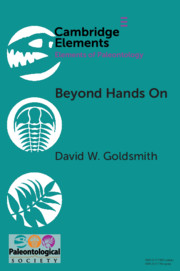References
Anbarasi, M., Rajkumar, G., Krishnakumar, S., Rajendran, P., Venkatesan, R., Dinesh, T., Mohan, J., and Venkidusamy, S. (2015). Learning style-based teaching harvests a superior comprehension of respiratory physiology. Advances in Physiology Education, 39, 214–217.
Beaudoin, C. R. and Johnston, P. (2011). The impact of purposeful movement in algebra instruction. Education, 132, 82–96.
Bookstein, F. L. (1987). Random walk and the existence of evolutionary rates. Paleobiology, 13, 446–464.
Bridgeman, A. J., Schmidt, T. W., and Young, N. J. (2013). Using atomic orbitals and kinesthetic learning to authentically derive molecular stretching vibrations. Journal of Chemical Education, 90, 889–893.
Brown Wright, G. (2011). Student-centered learning in higher education. International Journal of Teaching and Learning in Higher Education, 23, 92–97.
Bull, S. and McCalla, G. (2002). Modelling cognitive style in a peer help network. Instructional Science, 30, 497–528.
Carlson, L. E. and Sullivan, J. F. (1999). Hands-on engineering: Learning by doing in the integrated teaching and learning program. International Journal of Engineering Education, 15, 20–31.
Chi, M. T. and Wylie, R. (2014). The ICAP framework: Linking cognitive engagement to active learning outcomes. Educational Psychologist, 49, 219–243.
Christensen, R., Knezek, G., and Tyler-Wood, T. (2015). Alignment of hands-on STEM engagement activities with positive STEM dispositions in secondary school students. Journal of Science Education and Technology, 24, 898–909.
Clasen, R. E. and Bowman, W. E. (1974). Toward a student-centered learning focus inventory for junior high and middle school teachers. Journal of Educational Research, 68, 9–11.
Cope, E. D. (1885). On the evolution of the vertebrata, progressive and retrogressive. American Naturalist, 19, 140–148.
Dunn, R. S. and Dunn, K. J. (1978). Teaching Students through Their Individual Learning Styles: A Practical Approach. Reston, VA: Reston Publishing.
Favre, L. R. (2009). Kinesthetic instructional strategies: Moving at-risk learners to higher levels. Insights on Learning Disabilities, 6, 29–35.
Felder, R. M. and Brent, R. (1996). Navigating the bumpy road to student-centered instruction. College Teaching, 44, 43–47.
Fleming, N. D. (1995). I’m different; not dumb. Modes of presentation (VARK) in the tertiary classroom. In Zelmer, A., ed., Research and Development in Higher Education, Proceedings of the 1995 Annual Conference of the Higher Education and Research Development Society of Australasia (HERDSA), pp. 308–313.
Flick, L. B. (1993). The meanings of hands-on science. Journal of Science Teacher Education, 4, 1–8.
Gotelli, N. J. and Colwell, R. K. (2011). Estimating species richness. In Magurran, A. E. and McGill, B. J., eds., Biological Diversity: Frontiers in Measurement and Assessment. Oxford: Oxford University Press, pp. 39–54.
Griggs, L., Barney, S., Brown-Sederberg, J., Collins, E., Keith, S., and Ianucci, L. (2009). Varying pedagogy to address student multiple intelligences. Human Architecture: Journal of the Society of Self-Knowledge, 7, 55–60.
Hake, R. R. (1998). Interactive-engagement versus traditional methods: A six-thousand student survey of mechanics test data for introductory physics courses. American Journal of Physics, 66, 64–74.
Hawk, T. F. and Shah, A. J. (2007). Using learning style instruments to enhance student learning. Decision Sciences Journal of Innovative Education, 5, 1–19.
Hestenes, D., Wells, M., and Swackhammer, G. (1992). Force concept inventory. The Physics Teacher, 30, 141–166.
Hoellwarth, C. and Moelter, M. J. (2011). The implications of a robust curriculum in introductory mechanics. American Journal of Physics, 79, 540–545.
Hofstein, A. and Lunetta, V. N. (2004). The laboratory in science education: Foundations for the twenty‐first century. Science Education, 88, 28–54.
Hunt, G. (2006). Fitting and comparing models of phyletic evolution: Random walks and beyond. Paleobiology, 32, 578–601.
Keng Sheng, C. (2016). Tailoring teaching instructions according to students’ different learning styles: Are we hitting the right button? Education in Medicine Journal, 8, 103–107.
Lujan, H. L. and DiCarlo, S. E. (2006). First-year medical students prefer multiple learning styles. Advances in Physiology Education, 30, 13–16.
McShea, D. W. (1994). Mechanisms of large-scale evolutionary trends. Evolution, 48, 1747–1763.
Michael, J. (2006). Where’s the evidence that active learning works? Advances in Physiology Education, 30, 159–167.
Michael, J. and Modell, H. I. (2003). Active Learning in Secondary and College Science Classrooms: A Working Model for Helping the Learner to Learn, 1st edn. London: Lawrence Erlbaum Associates.
Mobley, K. and Fisher, S. (2014). Ditching the desks: Kinesthetic learning in college classrooms. The Social Studies, 105, 301–309.
Niklas, K. J. (1994). Morphological evolution through complex domains of fitness. Proceedings of the National Academy of Sciences of the United States of America, 91, 6772–6779.
Prince, M. (2004). Does active learning work? A review of the research. Journal of Engineering Education, 93, 223–231.
Raup, D. M. (1991). Extinction: Bad Genes or Bad Luck? 1st edn. New York, NY: W. W. Norton & Co.
Roopnarine, P. D., Byars, G., and Fitzgerald, P. (1999). Anagenetic evolution, stratophenetic patterns, and random walk models. Paleobiology, 25, 41–57.
Sorgenfrei, T. (1958). Molluscan Assemblages from the Marine Middle Miocene of South Jutland and Their Environments. Copenhagen: Geological Survey of Denmark.
Smith, A. B. (1994). Systematics and the Fossil Record: Documenting Patterns of Evolution, 1st edn. Oxford: Blackwell’s Science.
Stohlmann, M., Moore, T. J., and Roehrig, G. H. (2012). Considerations for teaching integrated STEM education. Journal of Pre-College Engineering Education, 2, 28–34.
Volpe, E. P. (1984). The shame of science education. Integrative and Comparative Biology, 24, 433–441.
Weimer, M. (2002). Learner-Centered Teaching: Five Key Changes to Practice, 1st edn. San Francisco, CA: Jossey-Bass Publishers.
Zimmerman, V. (2002). Moving poems: Kinesthetic learning in the literature classroom. Pedagogy, 2, 409–425.





